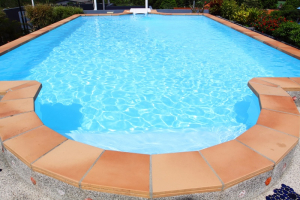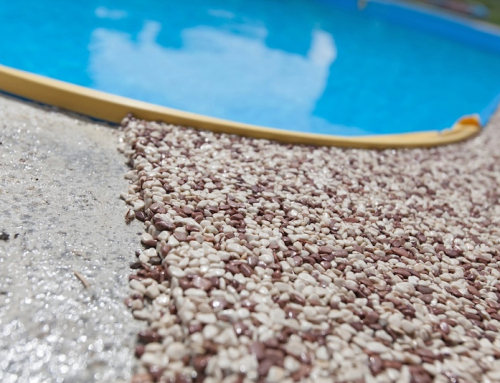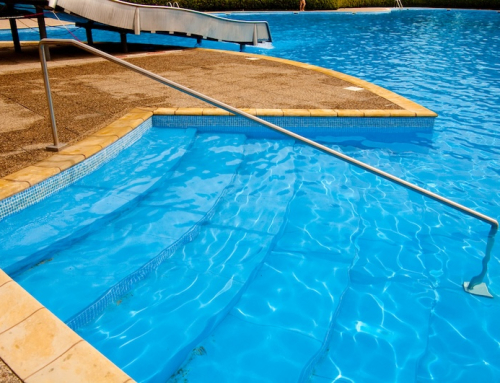A gunite pool can handle years of Florida weather, but the surface won’t last forever. In Tampa’s hot sun and humid climate, plaster breaks down quicker than most homeowners expect. Small cracks, stains, or rough spots may seem minor at first, but they grow into bigger problems that make cleaning harder and repairs more expensive.
Ignoring the signs doesn’t just hurt the look of the pool. It shortens its lifespan. The good news is resurfacing brings the pool back to life. Keeping it safe, attractive, and easier to maintain. Knowing how often to resurface, what warning signs to watch for, and what budget to set aside helps Tampa homeowners like you to stay ahead of costly surprises.
How Long Does a Gunite Pool Last Before Resurfacing?
A gunite pool usually needs resurfacing every 10 to 15 years. In Tampa, that timeline can be shorter because the heat, rain, and year-round use wear down the surface faster. Unlike vinyl liner pools or fiberglass pools, gunite pools are built with a dry concrete mix that cures into a rock-solid shell. The structure lasts for decades, but the pool’s surface doesn’t. That’s where resurfacing comes in. It keeps your pool’s beauty, safety, and function in check.
Some pools stretch closer to 15 years with proper maintenance. Others may need attention as early as 8 to 10 years. The difference comes down to how you care for it and the conditions it faces.
Things that shorten your gunite pool’s lifespan include:
- Poor water chemistry or unbalanced pH levels
- Heavy swimming load during peak season
- Tampa’s harsh sun and storm cycles
- Skipping regular cleaning or using rough tools
- Low-quality plaster or quick epoxy pool paint fixes
Key Signs a Gunite Pool Needs Resurfacing
You don’t always need a contractor to tell you something’s wrong. Many signs show up right on the pool’s surface. Still, a pool resurfacing company can confirm whether it’s just cosmetic or a deeper problem.
|
Sign |
What You See |
What Needs Contractor Check |
|---|---|---|
|
Cracks or rough texture |
Surface feels sharp on your feet |
Structural cracks vs. surface-only damage |
|
Stubborn stains |
Dark spots that don’t fade with acid wash |
Whether stains go beyond the plaster |
|
Water leaks |
Dropping water level or higher water bills |
Leak detection in pool construction |
|
Frequent patch jobs |
Chips or rough spots keep coming back |
If a full new surface is required |
|
Balance issues |
Hard to keep chemicals stable |
If worn plaster is causing an imbalance |
Catching these signs early saves you from bigger, more expensive repairs. Resurfacing gunite pools on time keeps your water clear, your pool smooth, and your maintenance costs under control.
Costs of Gunite Pool Resurfacing in Tampa
Once you know the signs, the next question is cost. In Tampa, the price to resurface a gunite pool usually runs between $8 and $17 per square foot, or about $4,000 to $10,000 for a standard swimming pool. That number changes based on size, finish, and the pool’s condition. Some projects stay on the lower end, while others climb if the surface is badly damaged or you want premium finishes.
Factors That Affect Gunite Pool Cost
Several factors determine what you’ll actually pay:
- Pool Size: Larger and deeper pools need more plaster material and labor.
- Finish Type: From standard plaster to pebble finishes, the choice makes a big difference in price and lifespan.
- Damage Level: Cracks, exposed rebar, or worn existing plaster add repair steps before the new surface goes on.
- Design Complexity: Steps, benches, and custom shapes increase labor hours.
- Extra Features: Adding glass tiles, water features, or new lighting raises the final bill.
Cost Comparison of Pool Resurfacing Finishes
Different resurfacing options carry different costs and benefits. Here’s how they compare:
|
Finish Type |
Cost per Sq. Ft. |
Lifespan |
Notes |
|---|---|---|---|
|
Plaster |
$3 – $6 |
5–10 years |
An affordable option, but less durable; often made with white cement and marble dust. |
|
Quartz |
$5 – $9 |
10–15 years |
Stronger than standard plaster, stain-resistant, with a good balance of cost and durability. |
|
Pebble |
$6 – $10 |
15–20+ years |
Extremely durable, with a natural look and textured feel; higher upfront costs but cost-effective long-term. |
Plaster is the cheapest way to resurface, but it won’t hold up as long in Tampa’s heat. Quartz costs more, yet it gives you a smoother surface and better stain resistance. Pebble is the high-end choice. It lasts the longest and keeps its look even after years of heavy use. So, for homeowners like you who plan to stay put, pebble often pays off in the long run.
Choosing the right finish depends on your budget, the pool’s condition, and how long you want the new surface to last.
How to Extend the Life of a Gunite Pool Surface
Resurfacing a gunite pool isn’t cheap, so the longer your pool surface lasts, the better. Think of it like taking care of a car. You can drive it for years if you keep up with the basics. The same applies to concrete pools in Tampa. With a little effort, you can delay the resurfacing process and keep the pool’s surface looking sharp.
Simple ways to make your gunite pool last longer include:
- Proper water chemistry maintenance: Balanced pH and calcium hardness protect plaster material the same way good oil protects an engine. Skip it, and the surface wears down faster.
- Routine cleaning and brushing: Brushing is like dental care for your pool. Do it often, and stains and buildup won’t eat away at the finish.
- Professional inspections: A pool resurfacing company can spot small cracks or rough patches early. Catching problems at this stage saves you from costly repairs later.
These steps keep your pool surface smooth, safe, and attractive so the pool remains a place you actually enjoy using, not a chore to maintain.
When to Call a Professional for Resurfacing

Even with good care, every pool surface eventually wears out. When cracks spread, stains won’t fade, or water balance becomes impossible to manage, it’s time to call a professional.
DIY resurfacing often looks cheaper, but the entire process requires specialized tools, knowledge of materials like quartz aggregate or pebble finishes, and the skill to apply them evenly. A mistake can cut the life of the new surface in half.
Here’s what you gain by hiring a professional:
- A resurfacing process done correctly for a longer-lasting finish.
- Warranties on both materials and labor.
- Local expertise with Tampa’s weather, water chemistry, and pool construction.
If your pool surface is past its prime, don’t wait for more damage. Creative Resurfacing Solutions offers expert pool resurfacing in Tampa.
Frequently Asked Questions
How often should a gunite pool be resurfaced?
Most gunite pools in Tampa need resurfacing every 10 to 15 years. Heavy use, poor water chemistry, or surface cracks may shorten that cycle.
What is the cheapest way to resurface a gunite pool?
Plaster is the most affordable option, usually costing $3 to $6 per square foot. It gives a smooth finish but has the shortest lifespan compared to quartz or pebble.
Does resurfacing fix leaks?
Resurfacing can seal minor surface leaks caused by worn plaster. Structural cracks or plumbing leaks, however, need additional repair before the new surface goes on.
What finish lasts the longest?
Pebble finishes are the most durable, often lasting 15 to 20 years or more. They resist stains, handle chemical balance better, and maintain the pool’s aesthetic appeal longer.
Can resurfacing increase home value?
Yes. A freshly resurfaced gunite pool improves both curb appeal and functionality. Buyers see a well-maintained swimming pool as a strong value-add, especially in Tampa’s market.






